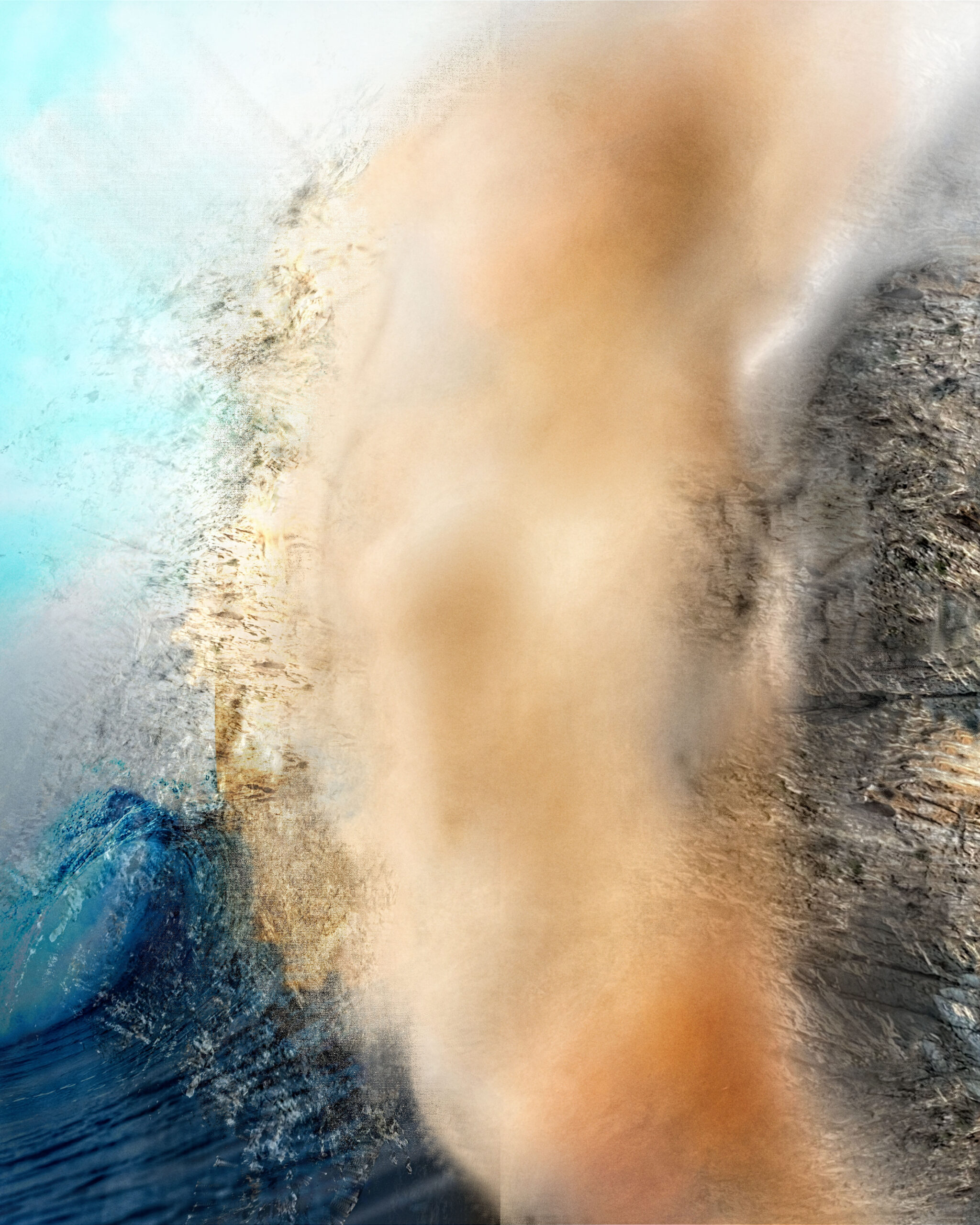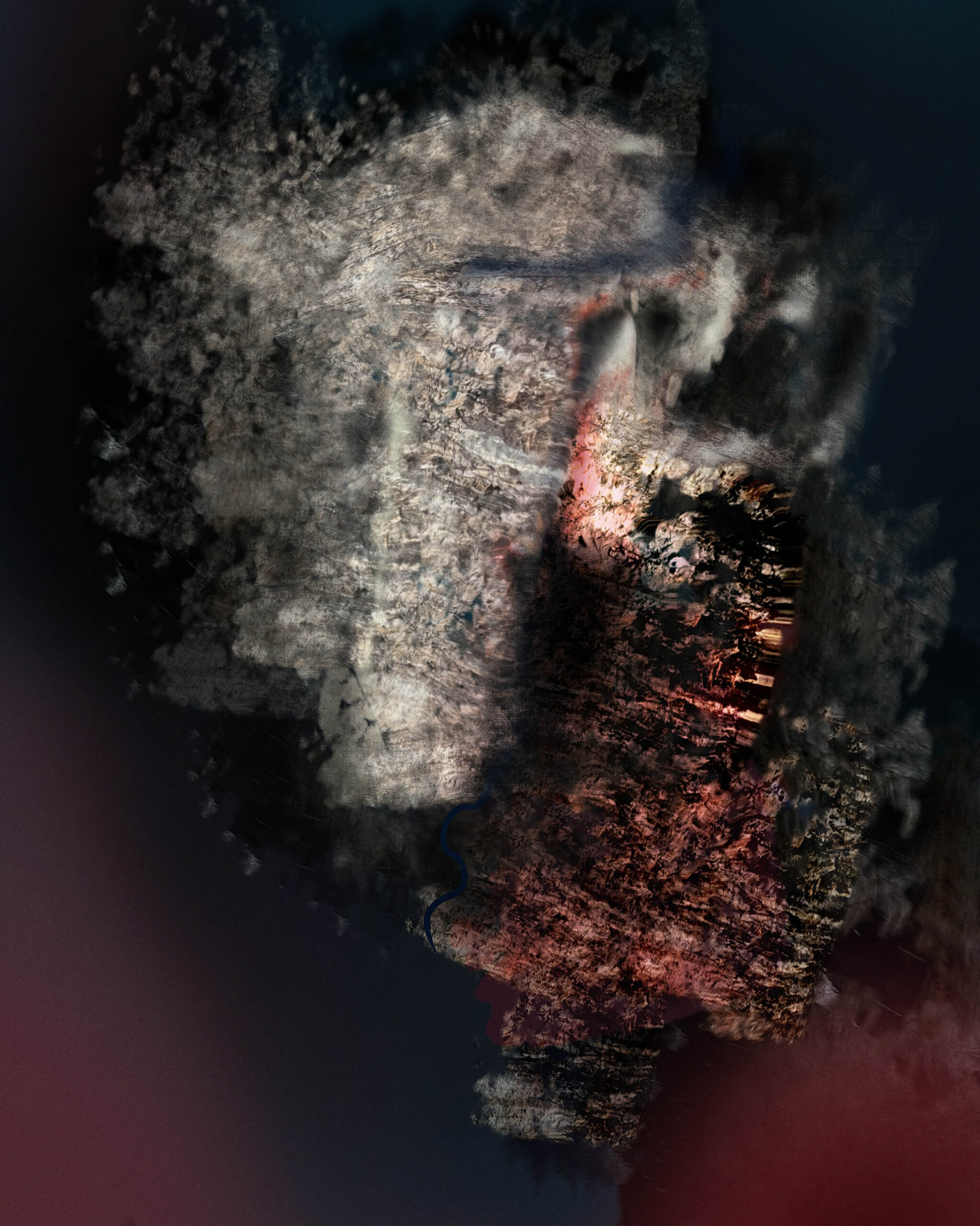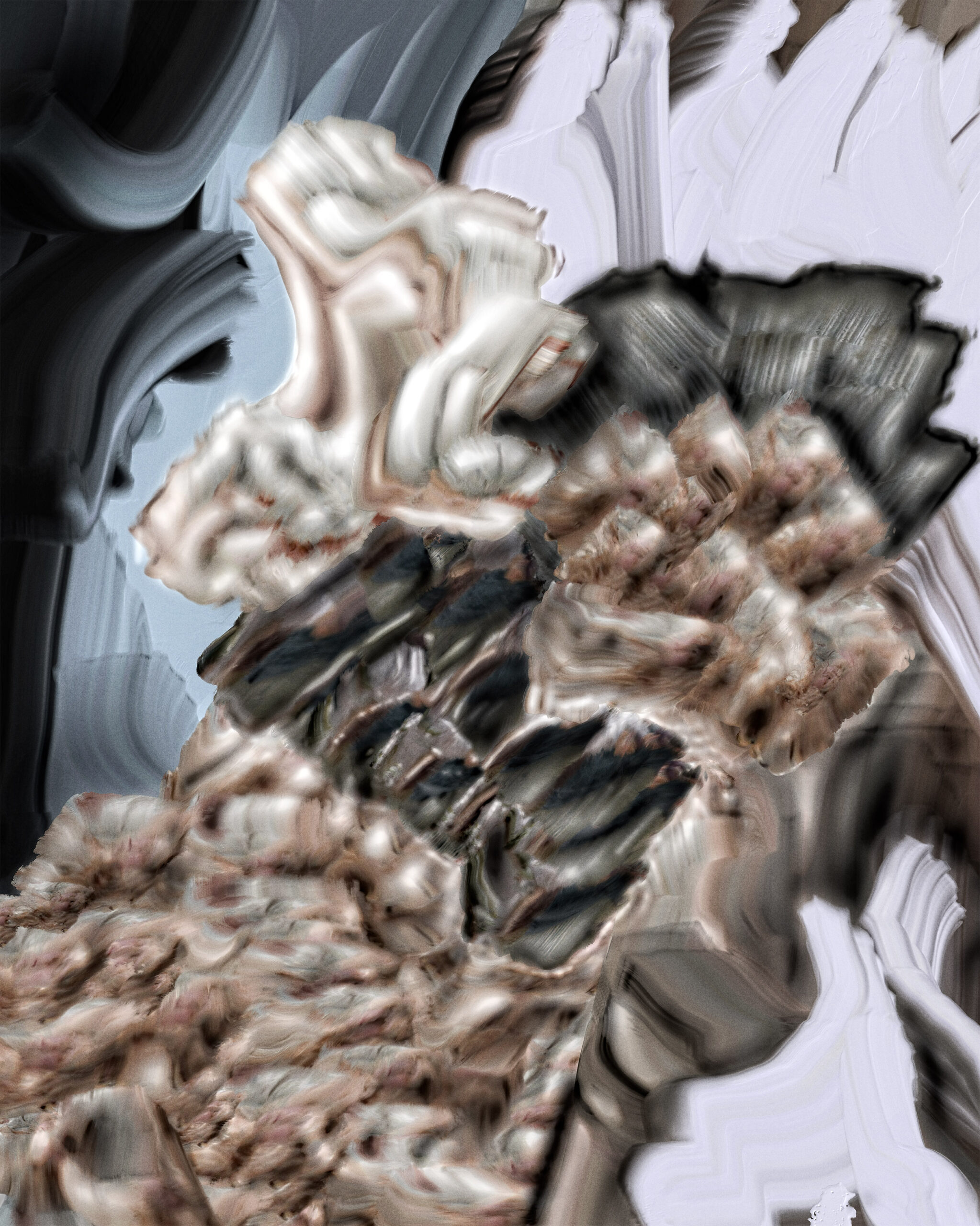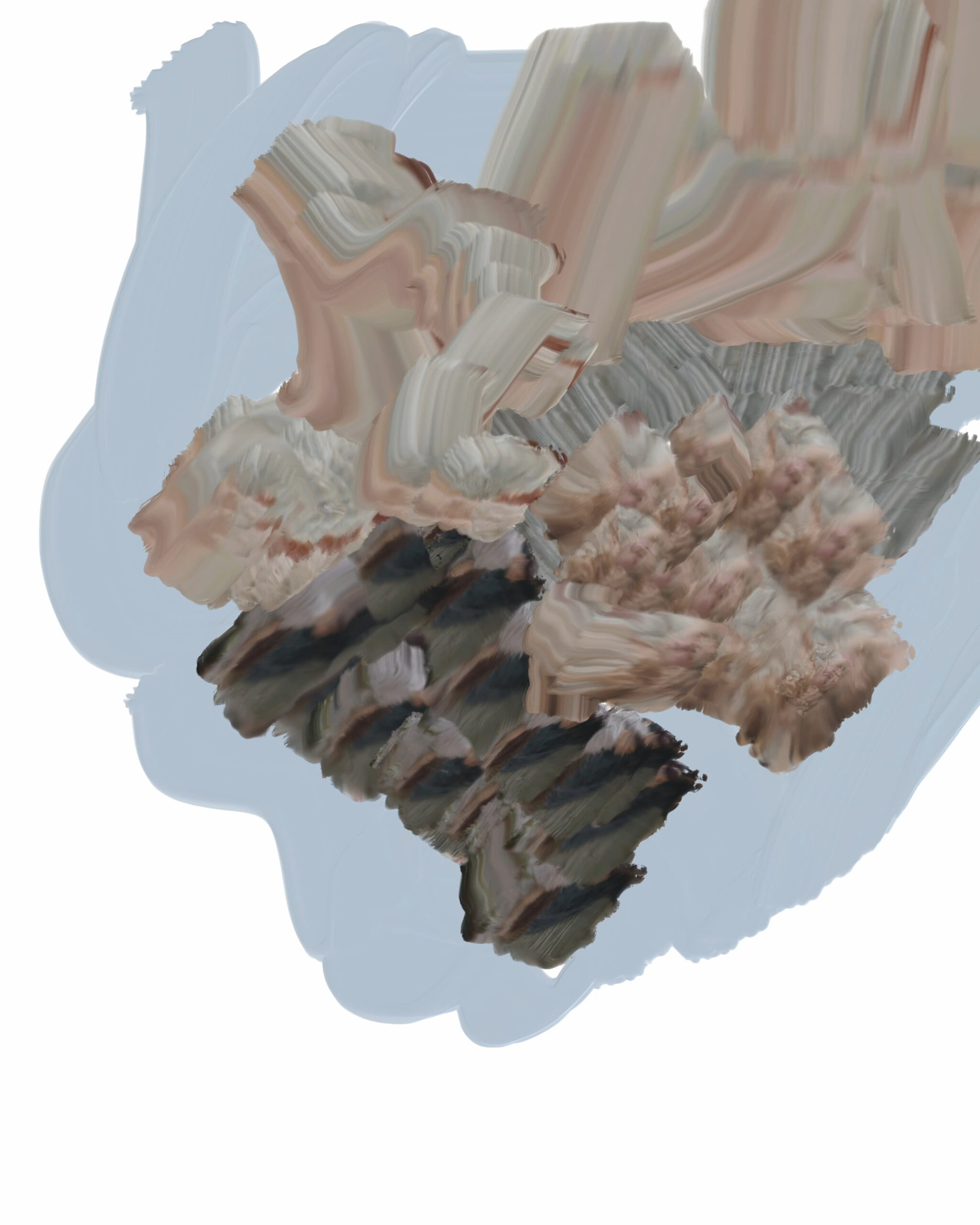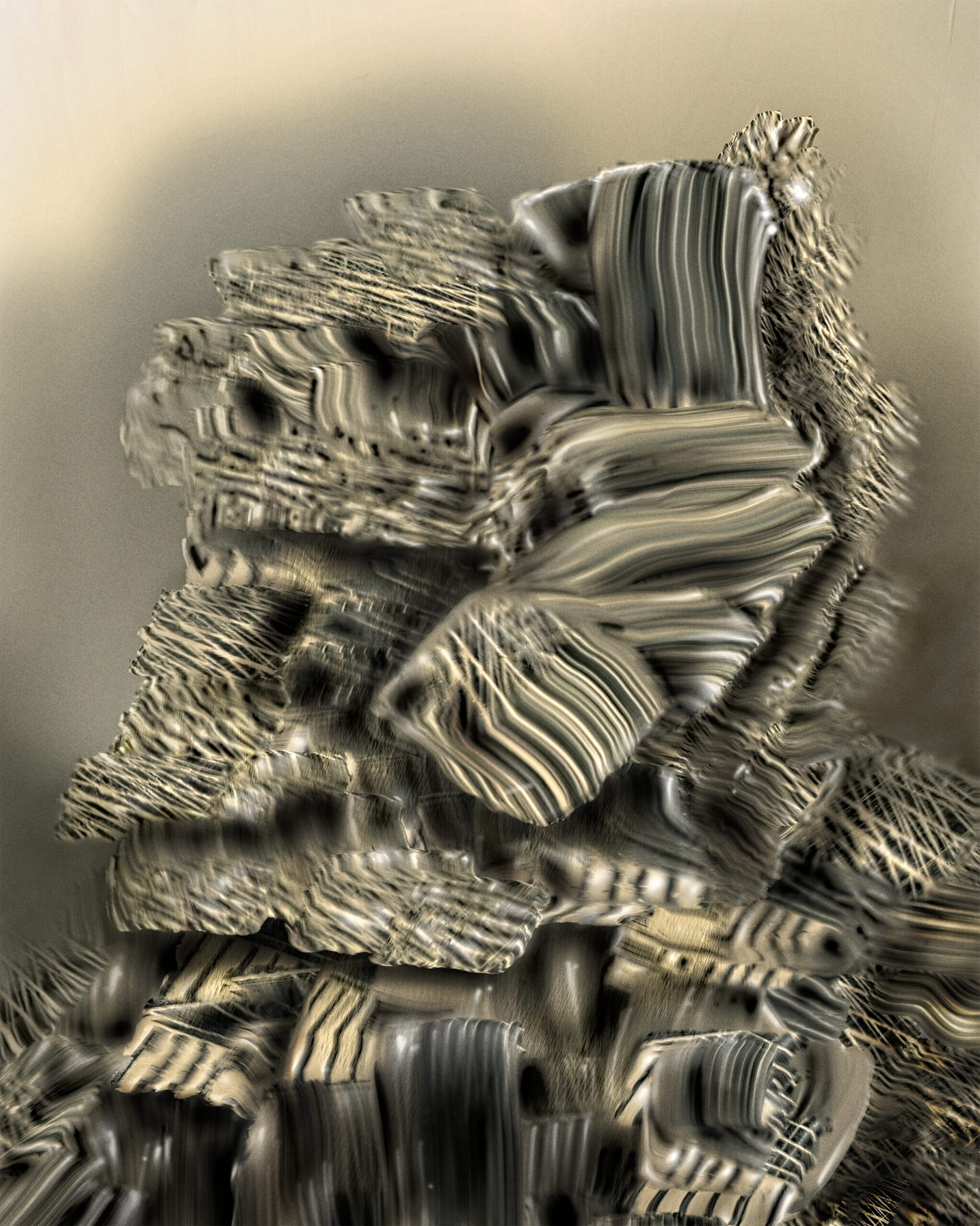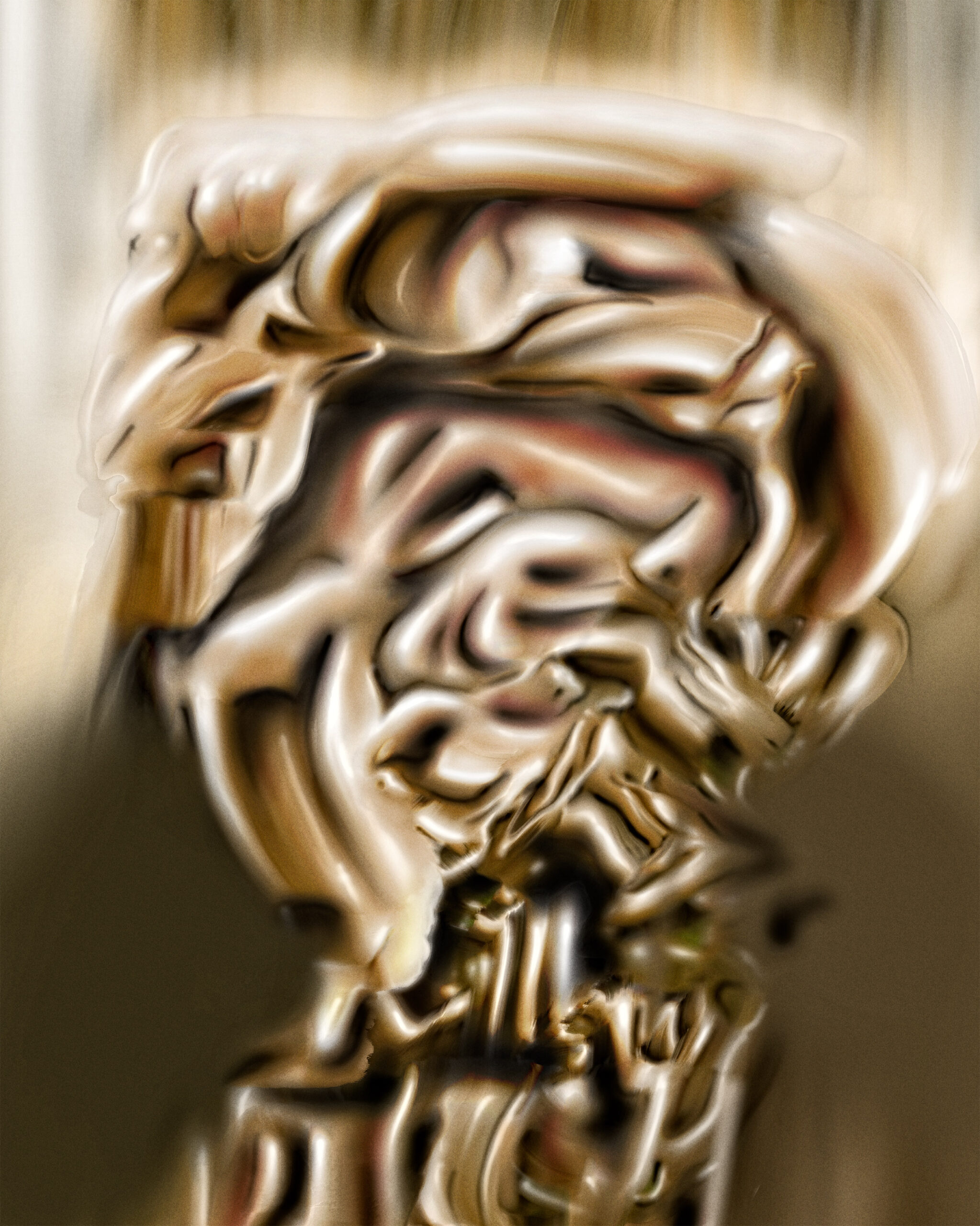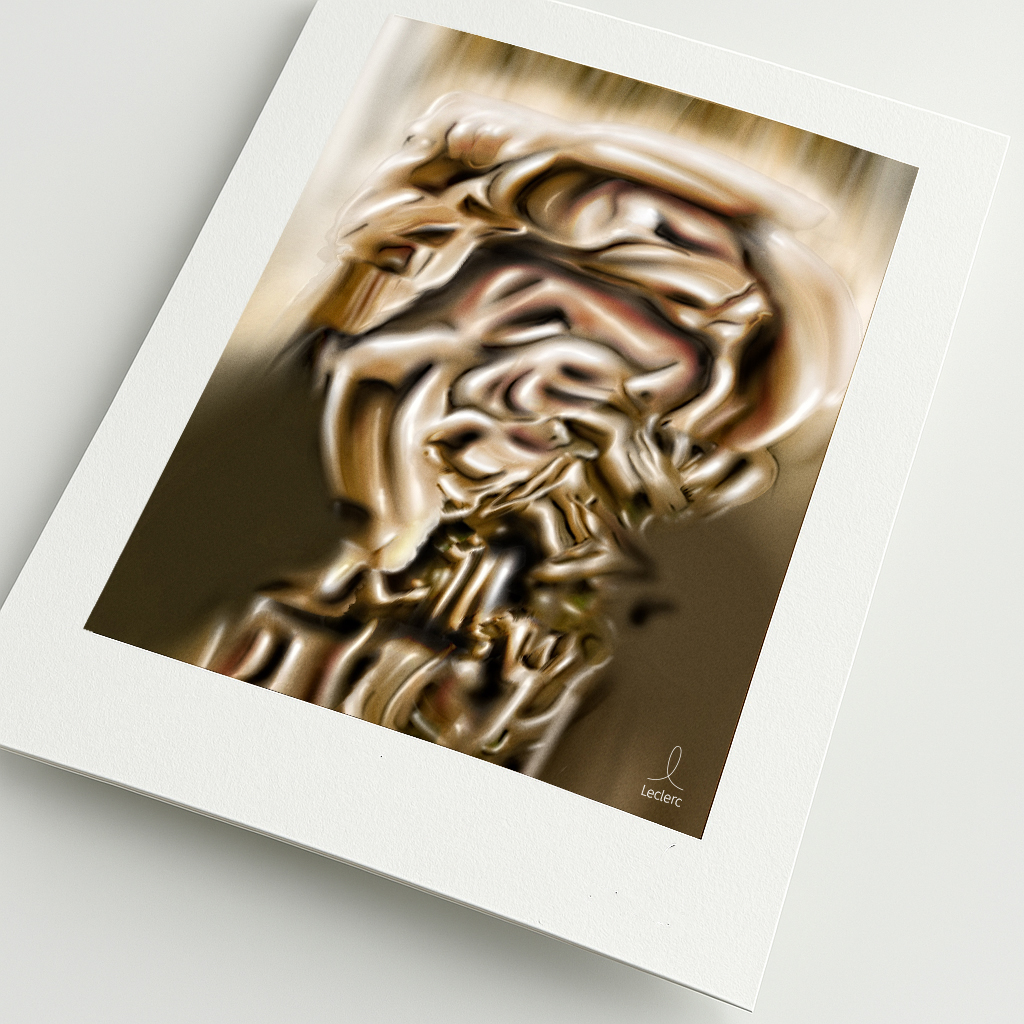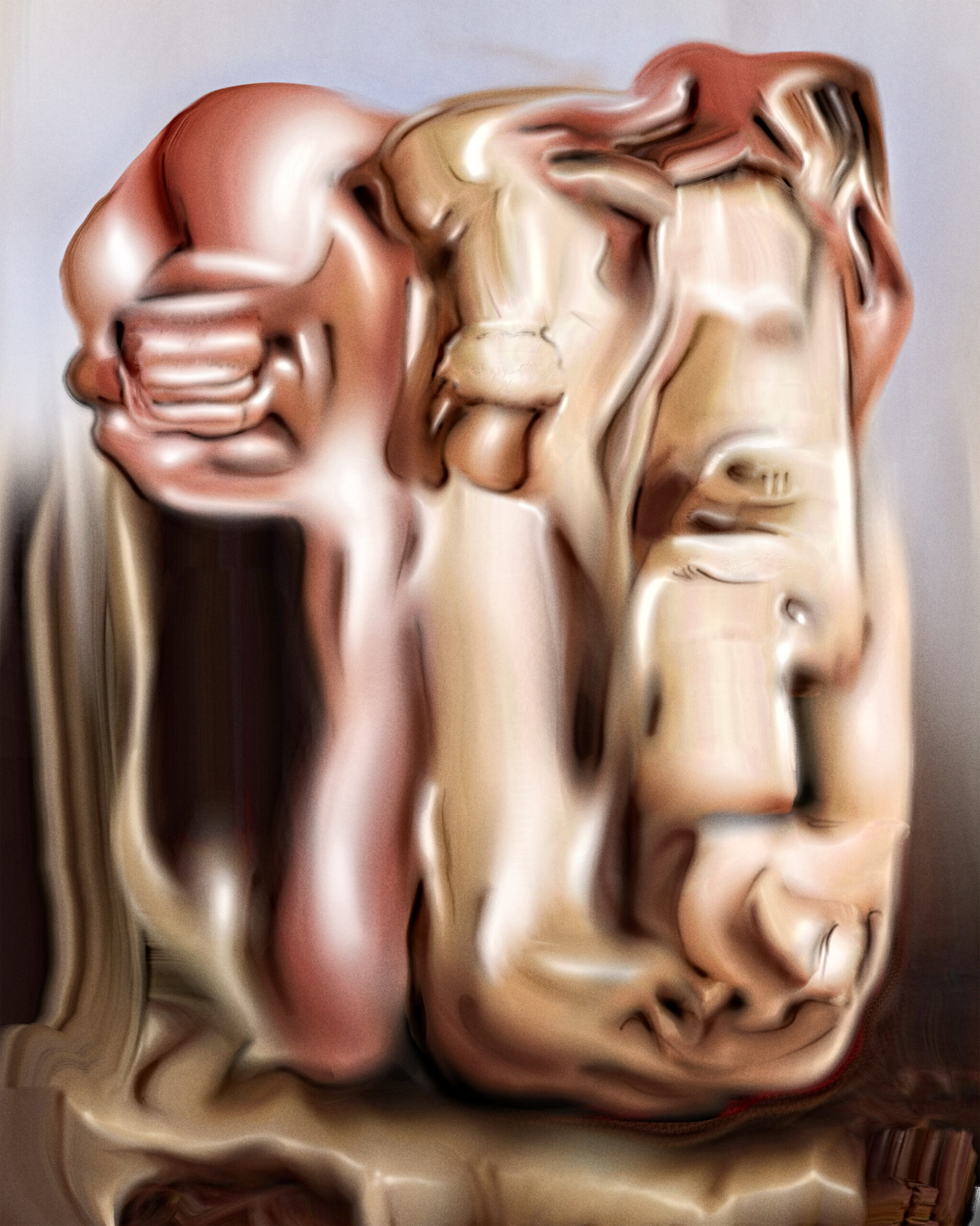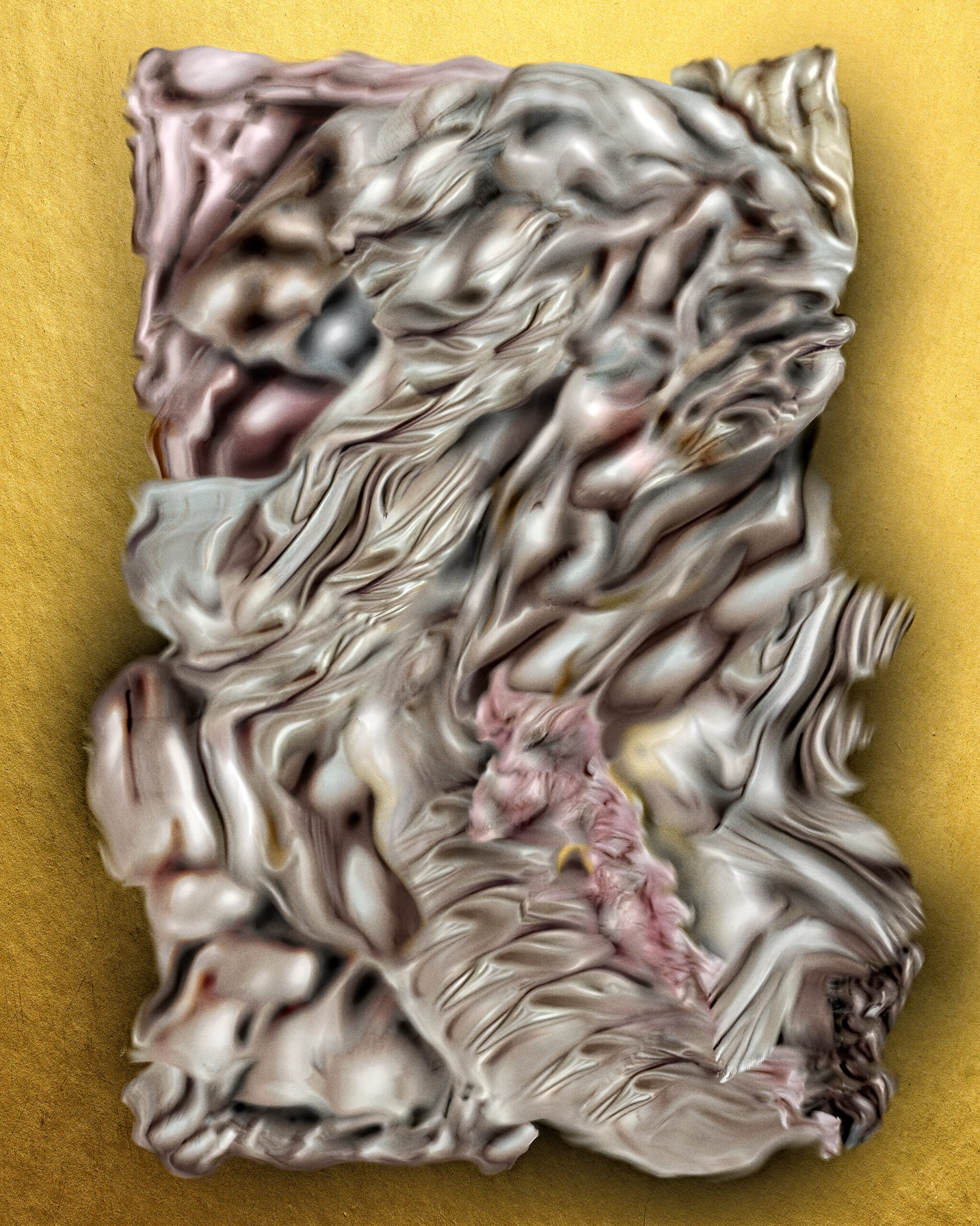Incarnata marks a threshold within my ongoing exploration of sirens. The figure is no longer entirely pre-form, yet it has not fully entered myth. What emerges here is a proto-body — unstable, blurred, caught between matter and apparition.
Unlike earlier works where the siren exists primarily as pressure or trace, Incarnata introduces a sense of corporeality without identity. The form is neither male nor female, neither human nor creature. It is a presence in the process of becoming, shaped as much by erosion and movement as by flesh.
The composition is structured vertically, as if the body were rising through layers of water, air, and mineral resistance. Edges dissolve, contours refuse to settle. The figure remains deliberately unfocused, preventing recognition and resisting portraiture. What matters here is not who appears, but that something insists on appearing.
Color and texture function as agents of transformation. Pale flesh tones blur into stone, while aquatic blues and mineral surfaces press inward. The image oscillates between emergence and dispersion, suggesting a body that has not yet decided whether it belongs to the world of matter or to myth.
Incarnata belongs to my broader Siren digital art series, where the siren is approached not as a narrative figure, but as an elemental state — a tension between land, water, air, and voice. Here, incarnation is incomplete, fragile, and provisional.
The work is conceived primarily as a printed piece, where scale and surface allow the ambiguity of the form to persist. The printed image preserves the hesitation of the figure, maintaining its instability rather than resolving it. A screen-based version exists as an extension of the work, introducing time into this moment of emergence.
Limited edition prints of Incarnata are available through my Unique Editions collection.
You can also view my work on Singulart
.
